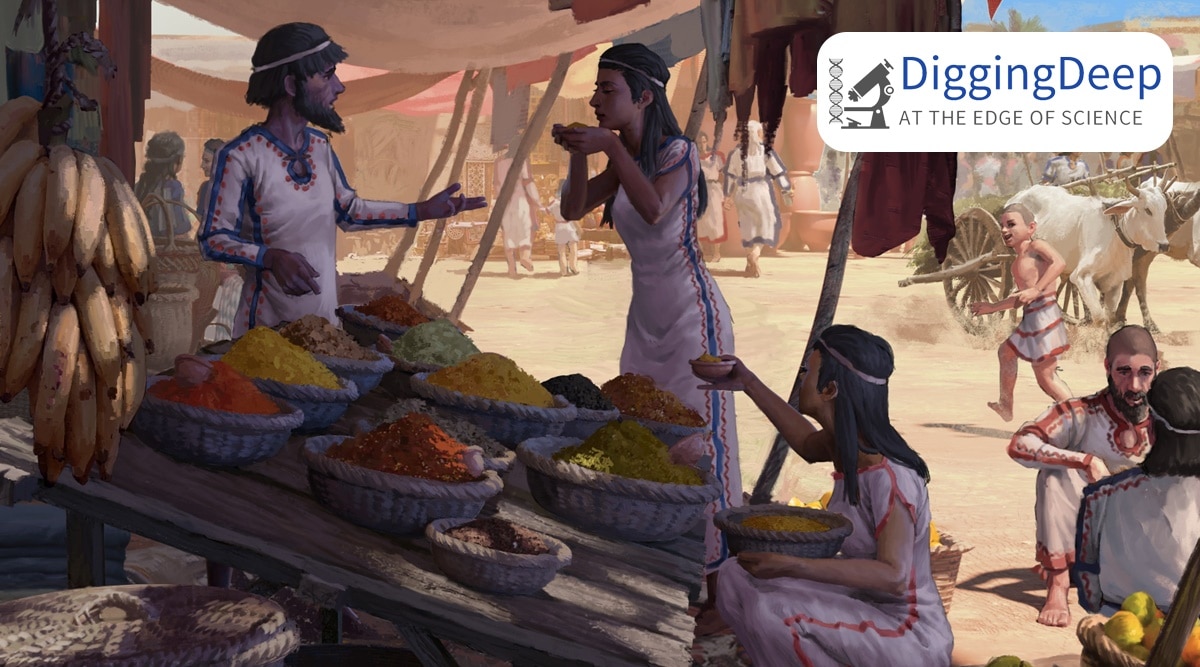In 1984, the initial old DNA of the vanished equine forefather Quagga was sequenced. Since, old biomolecule research study has actually come a lengthy means as well as has currently come to be a staple of several historical examinations. Biomolecules are natural substances discovered in all living cells. The 4 significant biomolecules are lipids, healthy proteins, nucleic acids, as well as carbs; as well as the initial 3 are very important for historical research studies.
While DNA was of main emphasis in research studies until the late 2000 s, research studies on old healthy proteins are rapid capturing up due to the exceptional conservation showed by them contrasted to nucleic acids. Healthy proteins can in some cases additionally use much better resolution than lipid accounts.
A research released in PNAS utilizes old healthy proteins in historical contexts to develop profession web links in between the Southern Levant (contemporary Israel, Jordan, Palestine, Syria, Lebanon) as well as South Asia as much back as Middle-Late Bronze Age (~2000-1200 BCE) as well as Iron Age (~1500-1200 BCE).
Specifically, the research study concentrated on human funerals from 2 websites in Israel: Megiddo (1800-1500 BCE) as well as Tel Erani (1100-1000 BCE). The research study reports the recuperation of oral calculus or discolorations on teeth from 16 people (13 from Megiddo, 3 from Tel Erani), which were after that utilized for healthy protein as well as micro-remain evaluation.
The healthy protein trademarks on the teeth were recognized as those of typical bread wheat, barley, soybean, sesame, banana as well as turmeric extract. The searching for is substantial as it develops the intake of food plants that were unique to the Eastern Mediterranean diet regimen, well prior to they were recorded in composing as well as art.
The group additionally evaluated phytolith deposits in oral calculi. Phytoliths are tiny silicaceous continues to be coming from plant cells as well as are maintained in teeth as well as enamel. The phytoliths were recognized to have actually been obtained largely from wheat as well as millets, as well as to a lower level, from date-palm. The abovementioned millets were thought about to be Oriental broomcorn or foxtail millets by the writers of the research study, as they are recognized to have actually gotten to the Levant through Central Asia by the 3rd millennium BCE.
Unforeseen finds
Wheat as well as hand were anticipated discovers, as wheat was tamed in Turkey/Near East around ~10000 BCE as well as hand is native to the area. However sesame is a non-local domesticate as well as vouches for trade web links in between Asia as well as the Levant. The earliest sesame seeds have actually been discovered in the Indus Valley, as well as the scientists keep that sesame had actually come to be an essential oilseed plant in the Eastern Mediterranean by the Bronze Age.
The exploration of intake of soybean, banana as well as turmeric extract was additionally entirely unforeseen. Soybean does not have any kind of document of growing in the Mediterranean before the twentieth century, as well as its facility of domestication depends on Central China. Soybean, like sesame, made up a significant oil plant of the Levant food basket, as well as unique oils have actually been perfectly stated in old Mesopotamian as well as Egyptian messages. Besides, oils can be conveniently delivered over cross countries.
So far, banana has actually mostly been recognized in the historical globe with phytoliths or textual/artistic proof, as tamed banana is seedless as well as does not leave any kind of seed continues to be in the old document. This makes banana healthy protein recognition rather notable, due to the fact that earlier recognitions of banana in the Eastern Mediterranean, such as the dry fruit pulp recouped in a 1500 BCE Egyptian burial place, have actually been very disputed. The writers end that this securely positions the banana in the Levant by the initial millennium BCE.
Turmeric story
Turmeric extract has actually been eaten in South as well as Southeast Asia because at the very least the late 3rd millennium BCE, with livestock oral calculi as well as ceramic from Indus Valley websites (~2600-2200 BCE) producing turmeric starch grains. The turmeric healthy protein recognition at Megiddo, surprisingly in the oral calculus of the exact same individual that utilized soybean– as well as that was possibly an investor himself– shows its arrival in the Levant by the Bronze Age. Some earlier research studies have actually reinforced the situation for Indo- as well as Sino-Mediterranean profession web links, running with the Indian Sea through the Red Sea as well as the Persian Gulf, well prior to the introduction of composing as well as manuscript.
The post keeps in mind that this exchange remained to happen throughout the 2nd millennium BCE (Bronze Age), a time when India underwent significant political restructuring: Indus Valley got on its last legs as well as the Gangetic Kingdoms had actually settled.
For example, natural deposit evaluation from Eastern Mediterranean historical contexts has actually produced trademarks that resemble those of cinnamon, nutmeg, as well as jasmine– all Oriental plants. The interment context of Ramses II (Egypt, 1213 BCE) produced peppercorns from South India as well as cloves from Indonesia.
These research studies highlight the expanding value of biomolecular trademarks in old contexts preceding the introduction of composing, also as textual proof usually has a tendency to disregard cooking exchange, as well as has a tendency to centre on the activity of consumer goods as well as pets. Biomolecular proof holds the capacity of superseding also macro herb proof, as the last has a tendency to be prejudiced in the direction of plants that endure much better.
